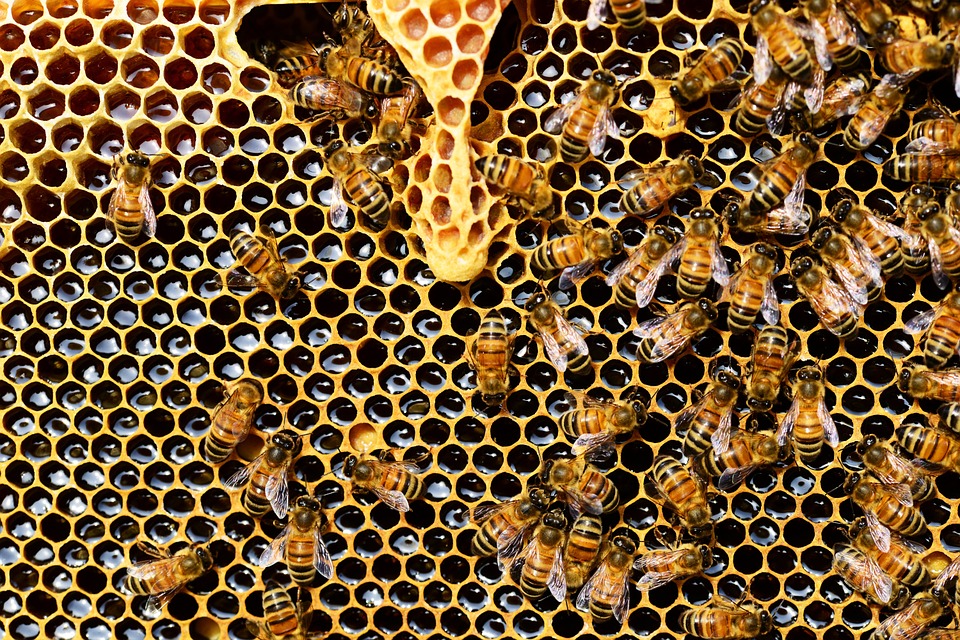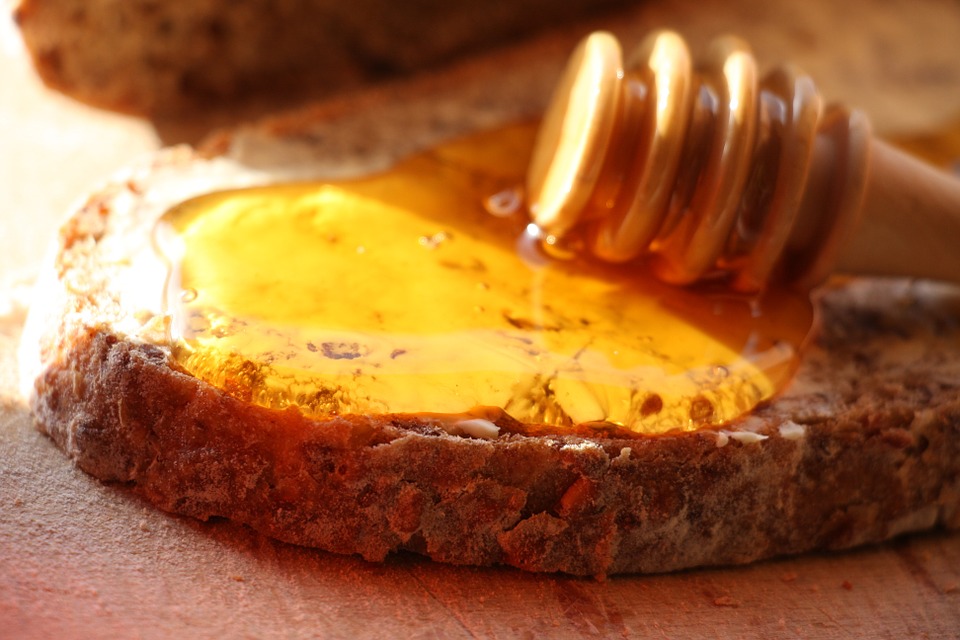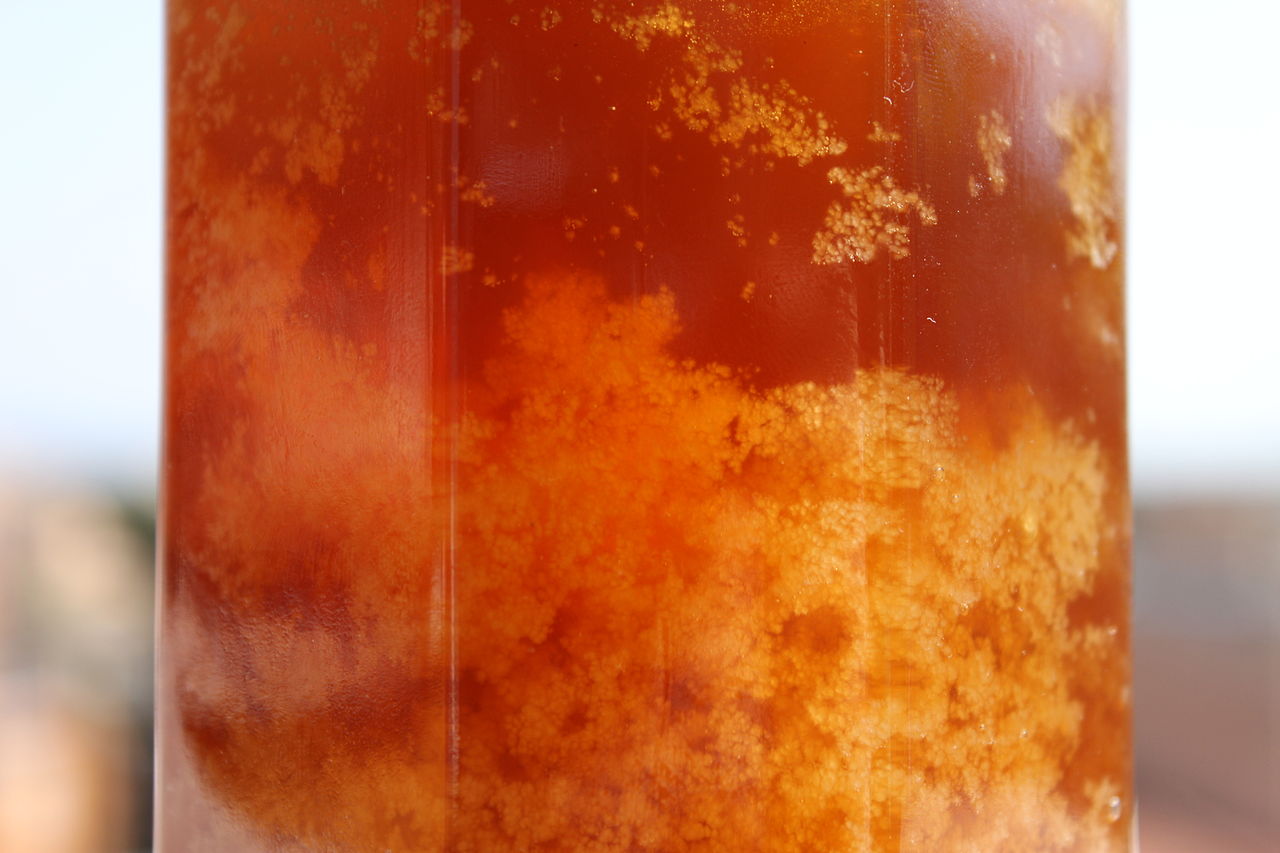Making honey is a buzzing business
by Scott Dutfield · 18/01/2019

How do honeybees manufacture honey and why do they make it?
It’s a well-known fact that honeybees make the silky, golden delight that is honey, but how exactly is it manufactured? Zipping from one flower to another, honeybees perch themselves on petals and extract the sweet nectar within. It is here that the production of honey begins. Storing the nectar in a separate ‘honey stomach’, enzymes within start transforming nectar into the beginnings of honey. Known as the ‘bee enzyme’, or invertase, it converts the sucrose sugar in nectar into simple sugars – glucose and fructose. Upon returning from their forage, these bees will regurgitate the contents of their honey stomach, giving it to other worker bees in the hive. These bees will then process the sugary solution by repeating the process of ingestion and regurgitation until their enzymes complete the conversion. This sugary solution is much less viscous than the thick honey we recognise spread on our toast. Honey only contains around 17 per cent water. Therefore, in order to remove the excess water, bees continually beat their wings to dry it out. Once completely processed, the product is stored in the iconic hexagonal cells within the hive. The trick to keeping long-lasting honey is to store it in an airtight location, thereby reducing the possibility of contamination. Bees will seal the honey in each cell with beeswax, which is secreted from specialised glands on their abdomens. This systematic approach to production mirrors that of our own manufacturing lines, but why do they even make honey? After all, they don’t naturally do it to feed human demand. Unlike their close relatives, the bumblebee and wasp, honeybees do not hibernate during the winter months. This means that they will require a source of nutrients when food isn’t readily available. Therefore they continuously produce honey– provided there is still space for it in the hive – in order to sustain themselves once flower nectar is taken away with the end of summer.
Past its ‘cell-by’ date?
One of the oldest examples of honey was discovered in an ancient Egyptian tomb. Incredibly, it was still edible, which begs the question of why honey doesn’t spoil. The answer lies in two main properties of honey. The first is its lack of water. In order for microbial growth to occur a certain level of water is required, which is known as a substance’s water activity. At around 17 per cent water, honey has a water activity of 0.60: bacteria and fungi require an activity of around 0.91 and 0.70 respectively in order to survive. Acidity is the other key factor in the preservation of this golden wonder. Honey has an average pH of 3.9, which prevents bacteria from growing in this acidic environment. This all means that honey can last for over 3,000 years, as proven by the examples left by the sweet-toothed Egyptians who produced it all those millennia ago.

Hardened honey
After a while honey may look like it’s starting to go ‘bad’, forming sugary crystals, but in fact, this is a sign of very good quality. Honey is saturated with sugars, which will naturally separate from the solution they’re held in by forming crystals. This process is aided by the temperature honey is stored at. When honey is in a cooler environment it will form these crystals – even in the hive, these crystals will form when the outside temperature drops below ten degrees Celsius. Moving crystallised honey to a warmer environment will return it to its original, runny state.

This article was originally published in How It Works issue 109
For more science and technology articles, pick up the latest copy of How It Works from all good retailers or from our website now. If you have a tablet or smartphone, you can also download the digital version onto your iOS or Android device. To make sure you never miss an issue of How It Works magazine, subscribe today!





